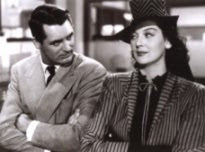
Twyla Tharp's athletic dance corps performs the Hare Krishna dream sequence
Milos Forman's brilliant 1979 film version of the Ragni-Rado-MacDermott tribal rock musical, "Hair," opened at a time when critics were particularly resistant to the idea of movie musicals, much more so than audiences.The studios, perhaps in an effort to court the reviewers, began pairing their big musical properties with a rather eclectic group of iconic filmmakers - Sidney Lumet and "The Wiz," John Huston and "Annie," Sir Richard Attenborough and "A Chorus Line" and Forman and "Hair." The ploy didn't work. The critics remained resistant, although Foreman's film was far better received that those by Lumet, Huston and Attenborough.
Personally speaking, I find "The Wiz" (which looks at if it had been shot through a microscope) and especially "A Chorus Line" (whose material I always found pretentious and insular) both unwatchable, but Huston's ”Annie” is perfectly fine and "Hair" is utterly unique, thanks largely to the commingling of Forman's singularly foreign sensibility and choreographer Twyla Tharp's unconventional moves.
Unfortunately, at 121 minutes, the release print of "Hair" doesn't contain everything that Forman filmed. Missing are musical numbers that, while trimmed from the film, can still be heard on the soundtrack album - the seminal "Frank Mills," "Air," "My Conviction," "Abie Baby" and "Fourscore."
After Forman expanded his "Amadeus" (1984) from 160 minutes to 180 minutes in the 2002, I hoped that he would go back and restore "Hair." But the harsh reality of the film business is that unsuccessful films are rarely given a second chance. There was a reason (not necessarily a good one) to expand "Amadeus": It had won eight Oscars.
The big omission from the "Hair" score is, of course, "Frank Mills," a song which one would think is inexpendable. Sung by the character of Chrissy, played in the film by Suzette Charles (whose role was entirely eliminated), the song is like a lulling anthem to the sweet obliviousness of apathy and is achingly beautiful in its utter simplicity.
If the name Suzette Charles rings a bell, it's because she would go on to be named Miss America - by default. In 1983, at age 20 (four years after "Hair" was filmed), Charles was named first runner up in the contest, after Vanessa Williams, and was eventually given the crown when Williams was revealed to be the subject of compromising photographs.
When I mentioned all this to Forman during an interview for the initial release of "Amadeus," he was delighted although he admitted that, by then, he had only a dim memory of Charles and her participation in "Hair."
Regarding the other songs missing from "Hair," Annie Golden sang "Air," Charlotte Rae did "My Conviction" and the late Nell Carter was among the singers on the combined "Abie Baby"/"Forescore."
One bit of trivia: The old RCA two-record soundtrack for the film does not list who sang what in the film, but the souvenir program for the movie included a removable plastic recording of selected songs from the film, with the singers listed (including Charles on "Frank Mills").
One of the songs in the film, "Walking in Space," is sung on screen by a young Asian actress playing a Vietnamese girl, but the singing voice coming out of her mouth belongs to ... Betty Buckley. I always wondered why that voice sounded so familiar - and so great.
Note in Passing: Two other film musicals of the era were helmed by less illustrious filmmakers - "Grease" by Randall Kleiser and "The Best Little Whorehouse in Texas" by the late Colin Higgins. Both, along with "Annie," were hugely popular with audiences, particularly "Grease" (as we all know by now). So much for the myth that moviegoers turned their backs on the genre. Not so. It was the studios that rudely slammed the door shut.





















